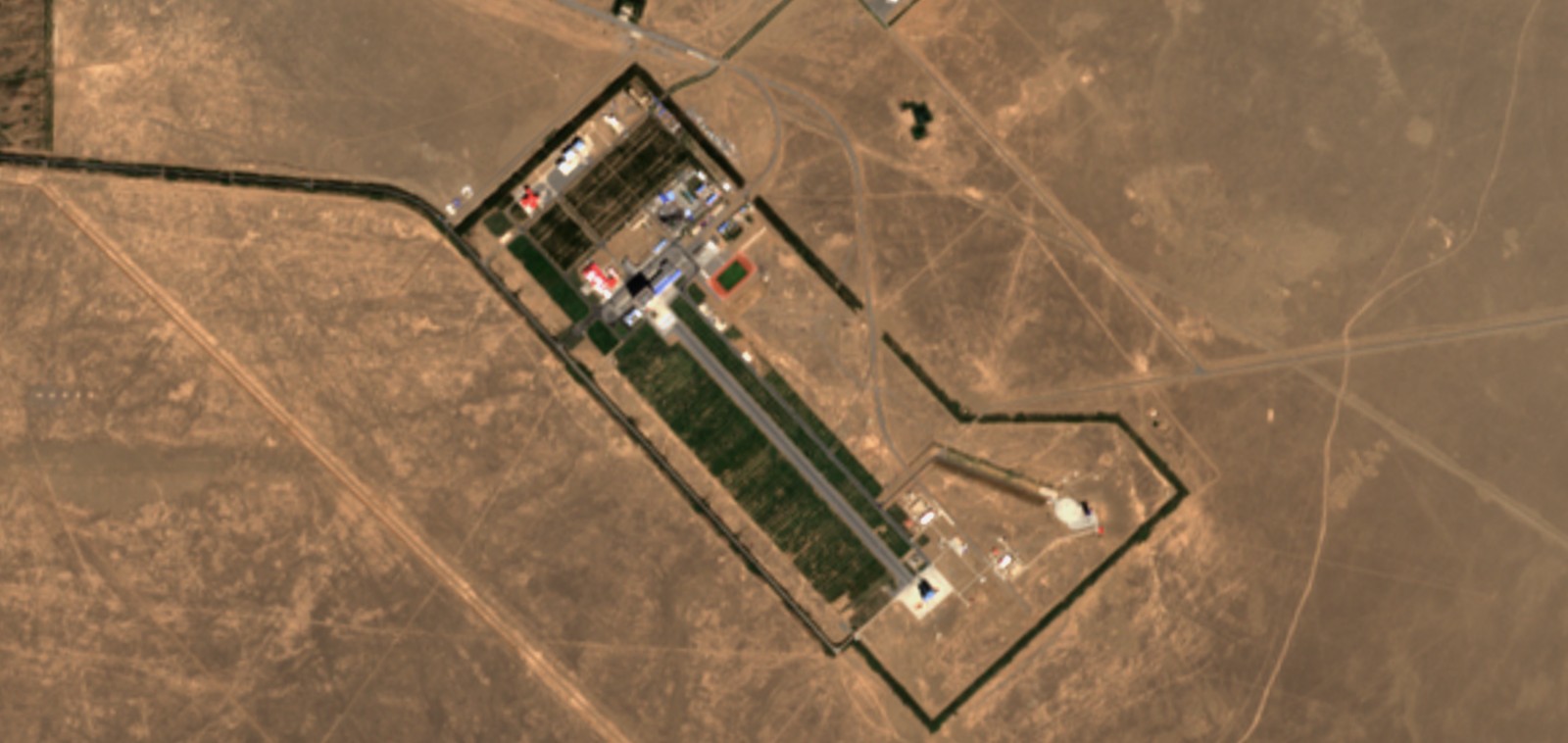HELSINKI — China conducted a clandestine first test flight of a reusable suborbital vehicle Friday as a part of development of a reusable space transportation system.
The vehicle launched from the Jiuquan Satellite Launch Center Friday and later landed at an airport just over 800 kilometers away at Alxa League in Inner Mongolia Autonomous Region, the China Aerospace Science and Technology Corp. (CASC) announced.
No images nor footage nor further information, such as altitude, flight duration or propulsion systems, were provided. The CASC release stated however that the vehicle uses integrated aviation and space technologies and indicates a vertical takeoff and horizontal landing (VTHL) profile.
The test follows a September 2020 test flight of a “reusable experimental spacecraft”. The spacecraft orbited for days, releasing a small transmitting payload and later deorbited and landed horizontally. The spacecraft is widely believed to be a reusable spaceplane concept, though no images have emerged.
Giant space and defense contractor CASC also developed that vehicle and stated that the new vehicle tested Friday can be used as a first stage of a reusable space transportation system. The implication is that the two vehicles will be combined for a fully reusable space transportation system.
The developments have not come out of the blue. China stated in 2017 that it aimed to test a reusable spaceplane in 2020. The United States Air Force’s X-37B spaceplane is currently carrying out its sixth mission in orbit. Last year Boeing exited the Experimental Spaceplane (XSP) program, also known as the XS-1 program, another VTHL concept.
The new test also follows days after a flight of Virgin Galactic’s SpaceShipTwo flew passengers to the edge of space for the first time.
A spaceplane project was included in a 2017 CASC ‘space transportation roadmap’. The plans also included fully reusable launch vehicles and, around 2045, a nuclear-powered shuttle.
Chen Hongbo, from CASC’s China Academy of Launch Vehicle Technology (CALT), told Science and Technology Daily (Chinese) in 2017 that the reusable spacecraft would be capable of carrying both crew and payloads. Chen stated that some vehicles would have the characteristics of both aircraft and spacecraft. CALT was noted as the developer of Friday’s suborbital reusable demonstration vehicle.
Chen stated the aim was full reusability, moving beyond partial reusability of Falcon 9-like launchers. The spaceplane, the development and testing of which is to be completed by 2030, should be capable of being reused more than 20 times.
It will be oriented to orbital altitudes of between 300 to 500 kilometers, meet criteria of being “fast, reliable, and economical,” and meet the needs of military and civilian payloads, and be applicable for space tourism.
The China Aerospace Science and Industry Corp. (CASIC), another giant state-owned enterprise, is working on its own spaceplane, named Tengyun. Demonstration and verification of the reusable two-stage-to-orbit Tengyun spacecraft is to be completed by 2025. Tengyun will be a horizontal takeoff, horizontal landing (HTHL) system.
Chinese commercial companies and CASC are also developing reusable rockets. A number of private companies are planning “hop” tests in the coming months.
